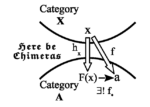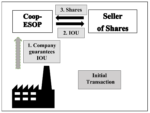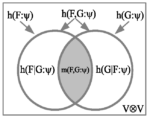Category theory has foundational importance because it provides conceptual lenses to characterize what is important and universal in mathematics—with adjunction seeming to be the primary lens. Our topic is a theory showing “where adjoints come from”.
Born Again! The Born Rule as a Feature of Superposition
Where does the Born Rule come from? We ask: “What is the simplest extension of probability theory where the Born rule appears”? This is answered by introducing “superposition events” in addition to the usual discrete events.
Fallacies about corporations
This article comments on Isabelle Ferreras’s “Democratizing the Corporation.” The focus is on the conceptual framing, which arguably contains a number of problems that are quite common on the left and are thus doubly deserving of commentary and explanation.
Opening the gates to Plato’s Heaven
The recipe to “open the gates to Plato’s Heaven” is by minimizing
the role of rivalrous substance and maximizing the role of non-rivalrous form. This creates a whole
series of different processes, positive feedback processes, vicious or virtuous circles, cumulative
circular causality, and increasing returns phenomena, which are analysed in this paper.
The heteromorphic approach to adjunctions: theory and history
In this paper, the history and theory of adjoint functors is investigated. Where do adjoint functors come from mathematically, and how did the concept develop historically?
A new logical measure for quantum information
Logical entropy is compared and contrasted with the usual notion of Shannon entropy. Then a semi-algorithmic procedure (from the mathematical folklore) is used to translate the notion of logical entropy at the set level to the corresponding notion of quantum logical entropy at the (Hilbert) vector space level.
How to understand quantum mechanics
This paper tries to elucidate the paradoxical aspects of quantum mechanics (QM) by using a simplified pedagogical model of QM based on the support sets of the state vectors, by assuming an ontology of superposition-as-objective indefiniteness, and by not giving any ontological interpretation to the computational device of the wave function.
Historical and Modern Arguments about Contractual Slavery
The overall conclusion is that any institution or practice—human trafficking is a modern case in point—that, in effect, treats a person as a non-person, as only a means instead of as an end-in-themselves, violates their inalienable rights and is illegitimate, even with consent.








